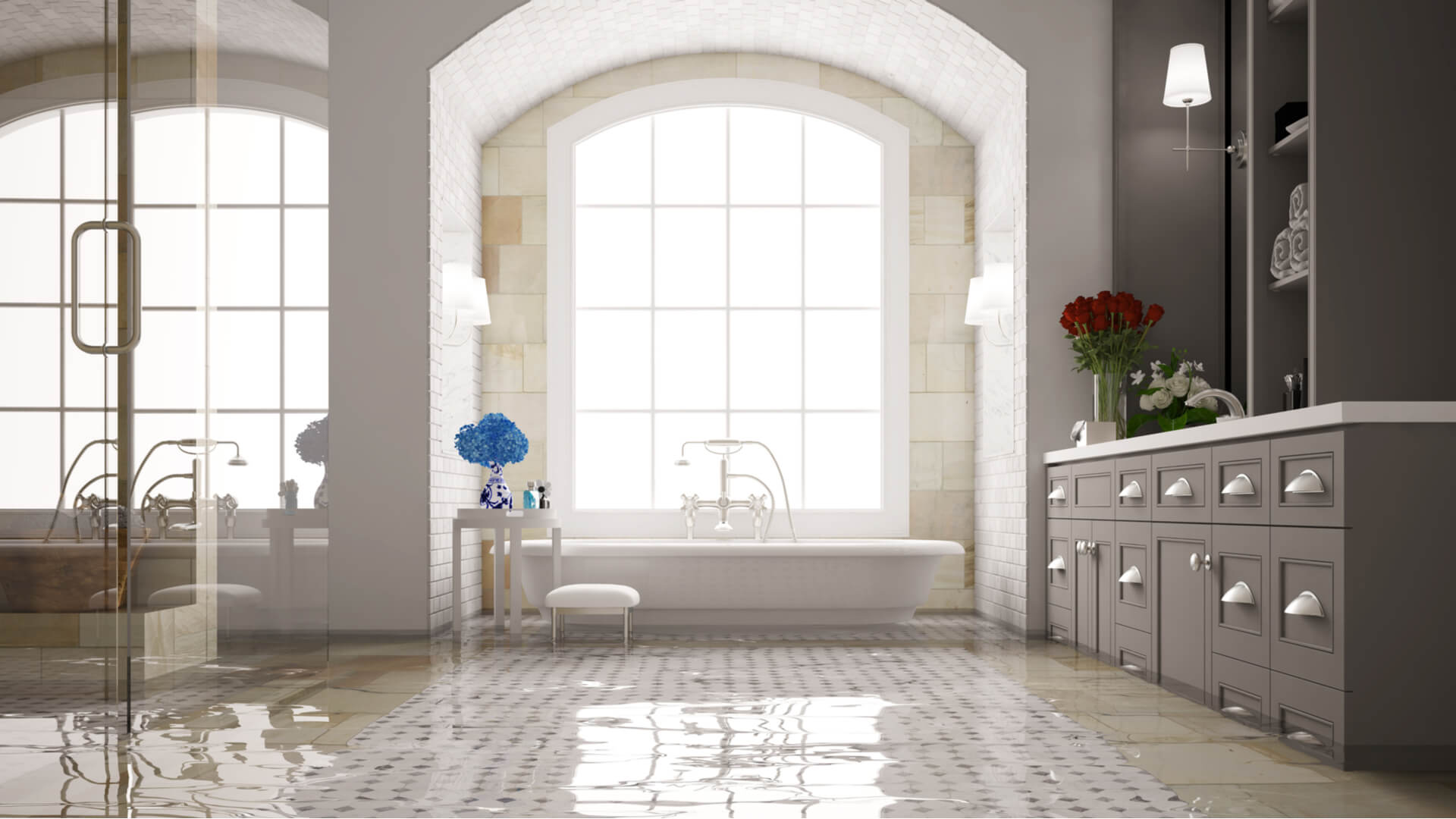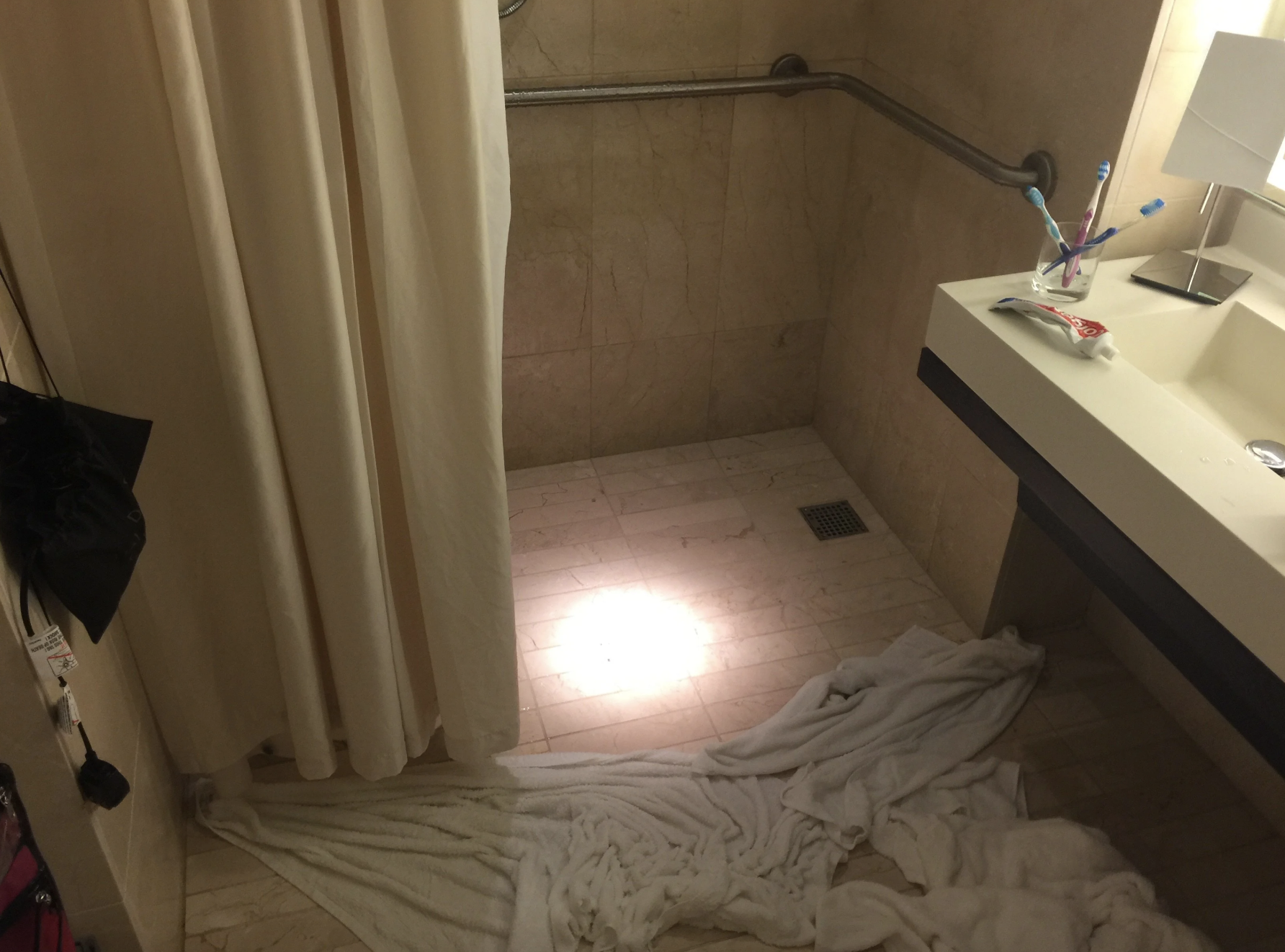Identifying the Source of the Flood

A flooded bathroom floor after a shower can be a frustrating and messy situation. To effectively address the issue, it’s crucial to pinpoint the source of the leak. This involves a systematic inspection of the shower components, including the showerhead, shower arm, shower valve, and drain.
Showerhead, Shower Arm, and Shower Valve Leaks
A leaky showerhead, shower arm, or shower valve can all contribute to a flooded bathroom floor. These components are prone to wear and tear over time, leading to leaks that can go unnoticed until they become significant.
Common Causes of Leaks
- Mineral Buildup: Hard water can leave mineral deposits on showerheads, shower arms, and valves, restricting water flow and creating leaks.
- Corrosion: Over time, metal components in the shower can corrode, leading to cracks and leaks. This is particularly common in older showers or those exposed to harsh water conditions.
- Worn-out Gaskets: The gaskets that seal the showerhead, shower arm, and valve can wear out, leading to leaks. These gaskets are often made of rubber or plastic and can become brittle or cracked over time.
- Loose Connections: The connections between the showerhead, shower arm, and valve can loosen over time, allowing water to leak out.
Troubleshooting and Repairing the Leak

Now that you’ve pinpointed the source of the leak, it’s time to get your hands dirty and fix it. Here’s a step-by-step guide to tackle common bathroom flooding culprits.
Repairing a Leaky Showerhead or Shower Arm, Bathroom floor flooded after shower
A leaky showerhead or shower arm can be a nuisance, but fixing it is often a simple task. Here’s how to do it:
- Turn off the water supply: Locate the shut-off valve for your shower and turn it off. This is usually found on the wall behind the shower or under the sink.
- Remove the showerhead: Most showerheads are attached to the shower arm with a threaded connection. Use a wrench or adjustable pliers to loosen the showerhead and remove it.
- Inspect the showerhead and shower arm: Check for any signs of wear, tear, or corrosion. If you see any damage, you may need to replace the showerhead or shower arm.
- Clean the showerhead: If the showerhead is just clogged, you can try cleaning it with vinegar. Soak the showerhead in a vinegar solution for a few hours, then rinse it thoroughly.
- Reinstall the showerhead: Once the showerhead is clean and dry, screw it back onto the shower arm. Tighten it securely, but don’t overtighten it.
- Turn the water back on: Slowly turn the water back on and check for leaks.
Replacing a Shower Valve
A faulty shower valve can be a significant source of water damage, so it’s important to address it promptly. Here’s a step-by-step guide to replacing a shower valve:
- Turn off the water supply: Locate the main water shut-off valve for your home and turn it off.
- Drain the plumbing system: Open the faucets in your bathroom to drain the water from the pipes.
- Remove the old shower valve: This step requires specialized tools and knowledge. You may need to use a pipe wrench to remove the valve stem and a hacksaw to cut the pipe.
- Install the new shower valve: Connect the new shower valve to the plumbing system using Teflon tape and pipe thread sealant. Ensure a tight seal to prevent leaks.
- Turn the water back on: Slowly turn the water back on and check for leaks.
Unclogging a Shower Drain
A clogged shower drain can lead to water backing up and flooding your bathroom. Here’s how to unclog a shower drain:
- Remove any visible debris: Use a drain snake or a pair of pliers to remove any large objects that may be blocking the drain.
- Pour boiling water down the drain: Boiling water can help to melt away grease and soap scum that may be contributing to the clog.
- Use a drain cleaner: If the clog persists, you can use a chemical drain cleaner. Be sure to follow the instructions on the product label carefully.
- Consider a plunger: A plunger can be effective in removing stubborn clogs. Place the plunger over the drain and push and pull up and down vigorously.
- Call a plumber: If none of these methods work, you may need to call a plumber to address a more serious clog.
When to Call a Plumber
While many bathroom flooding issues can be addressed with DIY repairs, there are situations where it’s best to call a professional plumber:
- Major leaks: If you have a large leak that’s causing significant water damage, it’s essential to call a plumber immediately.
- Complex plumbing issues: If you’re unsure about how to fix a leak or if the problem seems complicated, it’s best to consult a professional.
- Recurring leaks: If you’ve tried to fix a leak yourself but it keeps coming back, you may need to call a plumber to identify the root cause of the problem.
- Access to the plumbing: If you don’t have access to the plumbing behind the walls, you may need to call a plumber to diagnose and repair the leak.
Preventing Future Flooding: Bathroom Floor Flooded After Shower

Bathroom floor flooded after shower – Now that you’ve tackled the current flood, it’s time to prevent a repeat performance. A little proactive maintenance can go a long way in keeping your bathroom dry and your sanity intact. This section Artikels some key strategies to ensure your shower remains leak-free.
Regular Maintenance for a Leak-Free Shower
Think of your shower as a machine that needs regular check-ups. Just like you wouldn’t ignore a rattling car engine, you shouldn’t ignore signs of trouble in your shower. Here’s a checklist of essential maintenance tasks:
- Inspect showerhead and hoses: Look for cracks, leaks, or signs of wear and tear. Replace any damaged components immediately.
- Check for loose or cracked caulk: Caulk is the sealant that prevents water from seeping between the shower stall and the wall. Inspect the caulk regularly and re-apply as needed.
- Test the shower valve: Turn the shower on and off a few times to make sure the valve is operating smoothly. If you hear any rattling or grinding noises, you may need to replace the valve.
- Clean the shower drain: Regularly remove hair and debris from the drain to prevent clogs that can lead to water backing up and flooding.
Properly Sealing the Shower Stall
A properly sealed shower stall is your first line of defense against leaks. Here’s how to ensure a watertight seal:
- Choose the right caulk: Use a high-quality, mold-resistant silicone caulk specifically designed for bathrooms. Avoid using cheap caulk, as it’s more prone to cracking and leaking.
- Prepare the surface: Clean the surfaces to be sealed with a mild cleaner and let them dry completely. Remove any old caulk before applying new.
- Apply the caulk in a smooth, continuous bead: Use a caulk gun and a smoothing tool to create a neat, even bead of caulk. Press firmly to ensure good adhesion.
- Allow the caulk to cure completely: Follow the manufacturer’s instructions for curing time. This typically takes 24-48 hours.
Choosing and Installing High-Quality Shower Fixtures
Investing in high-quality shower fixtures can pay dividends in the long run, minimizing the risk of leaks and extending their lifespan. Here’s what to consider when choosing and installing new fixtures:
- Look for fixtures with a solid reputation: Choose brands known for their durability and reliability. Look for certifications from organizations like NSF International, which indicate that the fixtures meet safety and performance standards.
- Consider materials: Stainless steel, brass, and ceramic are all durable materials that resist corrosion and wear. Avoid fixtures made of plastic, as they are more prone to cracking and leaking.
- Professional installation: While you may be tempted to DIY, professional installation ensures that the fixtures are properly installed and sealed, reducing the risk of leaks.
